
Sweden’s mystical iron-age monument
Ale’s Stones in Sweden’s far south (Ales Stenar) may resemble Stonehenge, but instead of being surrounded by roads, Ale cleverly put his stones on cliffs, providing visitors with spectacular views. Ponder the competing theories of what the stones are: a burial monument, a sun calendar? After a decades-long dispute, including a court case, the county agreed to let the opposing theory (sun calendar) also have a sign. Today, the area is a nature reserve. Easily accessible from Ystad (Wallander country), and an hour’s drive south-east from Malmö, it’s perfect for a day trip. Enjoy local food in the superb Kåseberga Fisk, a very Swedish shop/cafe beneath, which includes a vegan fish option.
Åsa
Neolithic marvels in Pembrokeshire
Pentre Ifan burial chamber in Pembrokeshire is fantastic – a beautiful location and a striking Neolithic structure. In fact, the whole of Pembrokeshire is great if you want to immerse yourself in Britain’s ancient history, in fantastic settings, without crowds and the usual extortionate prices. Two-and a bit miles down the road from Pentre Ifan is Carreg Coetan Arthur burial chamber – a Neolithic site with links to Arthurian legend. Drive up to the north of Pembrokeshire and you’ll find King’s Quoit, another Neolithic burial structure, sitting on a hillside framed by a beautiful backdrop of the Irish sea.
Finn
Profile
Readers’ tips: send a tip for a chance to win a £200 voucher for a Coolstays break
Show
Guardian Travel readers’ tips
Every week we ask our readers for recommendations from their travels. A selection of tips will be featured online and may appear in print. To enter the latest competition visit the readers’ tips homepage
–
The Peak District’s Stonehenge

Arbor Low is beautifully positioned in the stunning White Peaks area of the Peak District in Derbyshire, seven miles south-west of Bakewell. Sometimes called the Stonehenge of the North, it is perched on a high plateau, it commands panoramic, unspoiled vistas of lush green farmlands, while in the distance, the formidable gritstone edges encircle this timeless terrain. The craggy monoliths feature crevices concealing offerings left by enigmatic witches and pagans. When perched upon the bank above the henge looking inwards, you’re invited to contemplate the circular layout of the inner sanctum complete with altar stone, hinting at long-forgotten purpose. Despite the changing landscape, its status within a national park preserves its wild, natural beauty, allowing us to envision the landscape as it might have appeared millennia ago. Squinting, you can almost glimpse a Neolithic tribe weaving through the landscape, preparing to conduct ceremonies amid the ancient stones. Arbor Low still exudes mystique and wonder, shrouded in the secrets of time.
James Mclearie
Brittany’s 7,000-year-old standing stones
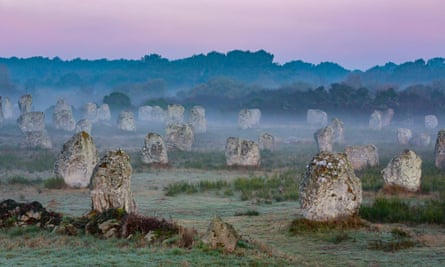
In Carnac, Brittany, there are more than 3,000 ancient standing stones, some dating back 7,000 years. These megalithic wonders are carefully lined up in three areas: Ménec, Kermario and Kerlescan. Carnac has more of these stones than anywhere else in the world. Carnac’s standing stones have spurred diverse theories regarding their purpose, including religious ceremonies, celestial alignments, and even legends of Roman soldiers transformed into stone. If you visit from October to March, it’s free. But if you come between April and September, you’ll need to join a guided tour. You’ll find parking at Ménec and Kermario.
Lorna Walkden
Ancient bones and fairytales on the Gower peninsula
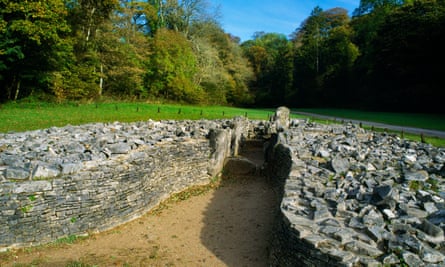
Parc Le Breos Neolithic burial site dates back to 3800BC. It’s classed as a “Cotswold-Severn” long barrow and the bones of about 40 people have been excavated from its chambers. Free parking is limited but the place is rarely busy. The site is situated on the Gower peninsula, a coastal area rich in archaeological sites and Welsh folklore. From the burial site, it’s possible to walk to the beautiful Three Cliffs Bay, passing through picturesque woodland and following the river across coastal marshland (with a short but steep detour to Pennard Castle). The whole place has a magical feel to it, perpetuated by local stories of fairies, hidden caves and ancient bones.
Amy
The ancient art of the Dordogne
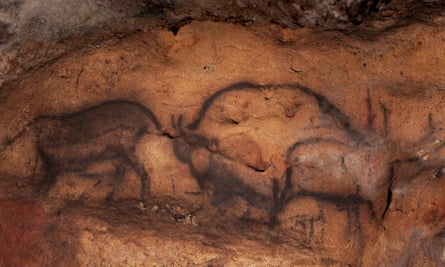
A visit to the prehistoric cave of Font de Gaume in Dordogne, France, offers a tantalising and authentic experience that sets it apart from the world-famous Lascaux cave. While Lascaux draws crowds with its meticulous replica, Font de Gaume grants visitors a rare opportunity to stand in the presence of real ancient art, untouched by modern hands. The cave’s narrow passages and low ceilings create an intimate atmosphere, enhancing the connection to our distant ancestors. The vivid, millennia-old paintings of bison, horses and reindeer evoke a sense of wonder, offering a truly authentic journey back in time that is humbling and awe inspiring.
Alex
after newsletter promotion
Secrets of the Spanish sea

Cycling distance from Alicante, in an overlooked corner for Albufureta beach, are the enchanting Viveros Romanos ruins. The ancient Roman fishing nursery forms a series of rectangular pools, semi-submerged in the sea, with doorways and walls still remaining. There is another Roman site nearby – which is bigger – but at the beach you can paddle or sit in the pools, looking out to the horizon, and imagine you’re thousands of years in the past. It’s a unique experience.
Sarah Collings
Orkney’s stone circle

The stone circle of the Ring of Brodgar is free to visit on Mainland Orkney – and it was so beautiful last summer I went there twice in one day. Dating back over 4,000 years, it was built as a thank you to nature for good weather and farming soils. It is a circle of stones and there is a peaceful lake behind it, making it beautiful in the full sun of the day or late at night with a full moon or a long summer evening with shadows lingering on the grass after midnight. Read George Mackay’s poem Swans at Brodgar to enhance the visiting vibe.
Will
Stone age spiritualism in County Meath, Ireland
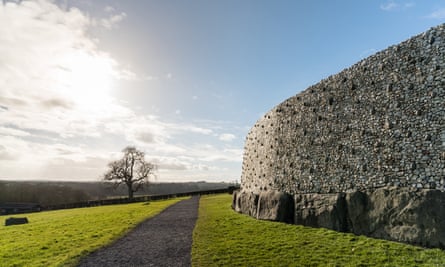
Newgrange monument in Donore, Meath, Ireland was constructed by stone age farmers 5,200 years ago. Originally archeologists thought it was solely a passage tomb, but it’s now recognised as a Neolithic site of religious, ceremonial and spiritual significance. It is a large circular mound, one-acre in area, encircled by 97 large kerbstones. Its most impressive feature is a 19-metre passage that allows sunlight to penetrate its deepest chamber at the winter solstice. Visiting is permissible only by guided tour, through Brú na Bóinne visitor centre.
Berni G
Winning tip: North Yorkshire’s mighty barrows and monoliths
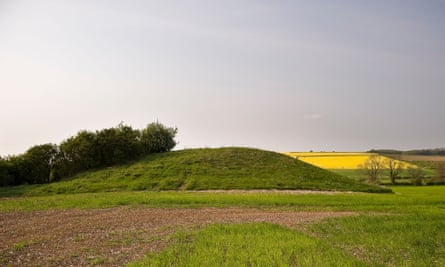
Very few people know about Duggleby Howe in the Yorkshire Wolds, one of the largest round barrows in Britain, 20 miles north-east of York. It sits in a landscape so rich in monuments as to draw comparisons with prehistoric Wessex, yet attracts only a fraction of visitors. Today, the round barrow is freely accessible. Standing at its summit, the enigmatic Gypsey Race – our most northerly chalk stream – can be seen wending through the valley. Along its route lie another barrow – Willy Howe – and the mighty Rudston monolith, the UK’s tallest free-standing megalith. This ritual landscape has a unique and brooding atmosphere, and must be experienced first-hand.
Mark Taylor




